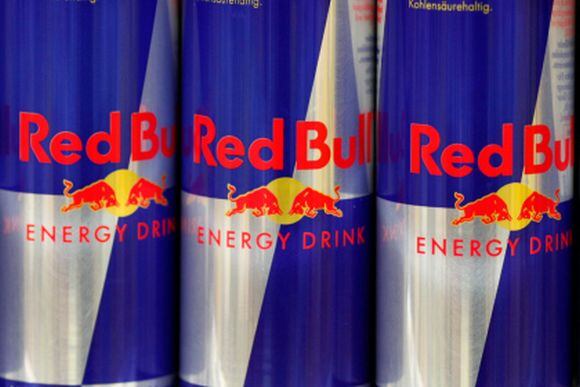Its comments came as the DGAC - a panel of experts tasked with developing recommendations about what Americans should eat – submitted its report to the U.S. Departments of Health and Human Services (HHS) and Agriculture (USDA), which will publish the 2015 Dietary Guidelines for Americans later this year.
You can read the highlights HERE and the full report HERE, but some passages which did not go down well with the ABA were:
- Sugars should be reduced in the diet and not replaced with low-calorie sweeteners, but rather with healthy options, such as water in place of sugar-sweetened beverages.
- Sugar-sweetened beverage taxes may encourage consumers to reduce sugar-sweetened beverage consumption.
- Dramatically reducing the intake of sugar-sweetened beverages ... would help lower intakes of added sugars.
- Moderate evidence from prospective cohort studies indicates that higher intake of added sugars, especially in the form of sugar-sweetened beverages, is consistently associated with increased risk of hypertension, stroke, and CHD in adults...Increased consumption of sugar-sweetened beverages was consistently associated with increased risk of type 2 diabetes.
- Consumption of 3 to 5 cups of coffee per day or up to 400 mg per day caffeine is not associated with increased long-term health risks…. [but] some evidence links high caffeine intake in the form of energy drinks to certain adverse outcomes, such as caffeine toxicity and cardiovascular events.
- At the level that the U.S. population consumes aspartame, it appears to be safe. However, some uncertainty continues about increased risk of hematopoietic cancer in men, indicating a need for more research.
High intensity sweeteners are a well established tool for weight management, says ABA
By recommending soda taxes, said the ABA, “the Committee’s efforts went beyond its charge and authority to develop dietary recommendations based on scientific evidence by advocating for public policies such as taxes and restrictions on foods and beverages. The Committee does not have the authority to make such recommendations, nor the scientific evidence or expertise to back up its recommendations.”
On the DGAC’s advice to reduce consumption of sugar and sugar-sweetened beverages for health reasons, the ABA said: “Numerous studies have shown that restricting one food or food group is not the best approach for achieving calorie balance or maintaining a healthy weight.” (Click HERE to read its response to the claims re. CHD and diabetes.)
The Committee went beyond its scope
On aspartame, it said: “The Committee went beyond its scope in examining the safety of low- and no-calorie sweeteners and caffeine, ingredients that have been repeatedly deemed safe by the FDA for decades.”
Moreover, the DGAC’s criticism of high intensity sweeteners is “contradictory”, said the ABA, given that “the body of science clearly shows that these ingredients can be an effective tool in weight loss, weight management and management of health conditions such as diabetes and hypertension.”

Finally, on caffeine, it said: “The recommendations did not scientifically define ‘high’ caffeine intake and inappropriately, narrowly and arbitrarily focused on a single category of products, energy drinks – which often have considerably less caffeine than similarly sized containers of coffee.”
CSPI: The strong recommendations on added sugars are important and have far-reaching policy implications
However, the DGAC’s advice to drink fewer sugary drinks was welcomed by many commentators.
Washington DC-based consumer advocacy group the Center for Science in the Public Interest (CSPI) said: “The strong recommendations on added sugars are important and have far-reaching policy implications. First, the report recommends limiting added sugars to a maximum of 10% of calories.
“The report bluntly recommends that Americans consume fewer sugary drinks. And it recommends adding a line for added sugars on Nutrition Facts panels, expressed in teaspoons as well as grams, and with a new Daily Value.”
I worry that the public may think they can drink more coffee than the guidelines really suggest
Lisa Young, PhD, RD, adjunct professor of nutrition at New York University, told FoodNavigator-USA that the DGAC was on the right track, adding: "The DGAC report supports the possibility of soda taxes as an incentive to promote purchasing healthier beverages, policy changes for SNAP to encourage purchasing healthier items, and limiting food marketing to kids, all steps in the right direction to promote a healthier food environment... I also support water as beverage of choice. Excellent!"

She added: “I support a recommendation for [added] sugar. 10% of calories is a start. However, I tend to prefer seeing guidelines for this in teaspoons, more user friendly than percent of calories and grams of sugar.”
As regards the advice about coffee, it was a little misleading to suggest that you can drink 3-5 cups a day without exceeding 400mg of caffeine, said Dr Young, given that “3-5 cups translates into 2-3 Starbucks sized cups”.
She added: “I worry that the public may think they can drink more coffee than the guidelines really suggest. Education on serving size is necessary here. And, no one got sick from omitting coffee in their diet. So no need to start drinking coffee...and remember, hold the cream and whole milk, and the skip the sugar, of course.”
Click HERE to read what the meat and dairy lobby thinks of the DGAC report.
Click HERE to read the highlights.
